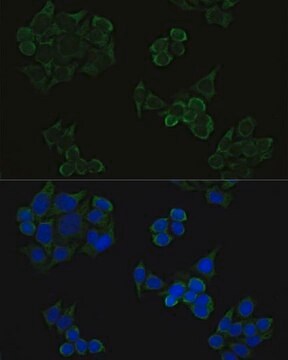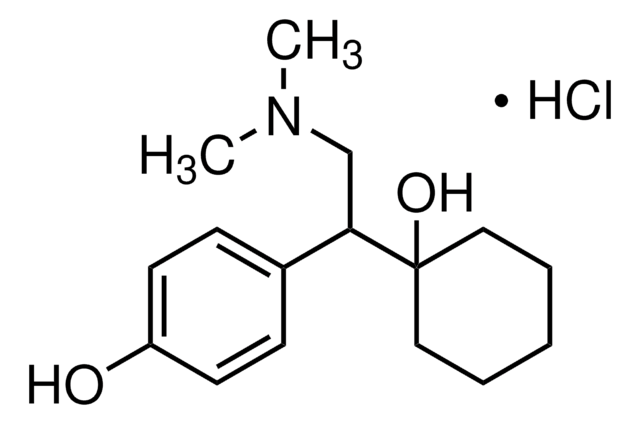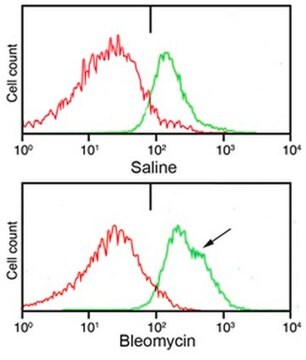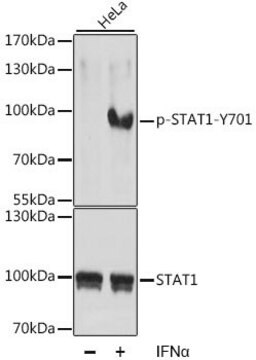MABF935
Anti-MPR300/IGF-2R/CD222 Antibody, clone 2C2
clone 2C2, from mouse
Synonim(y):
Cation-independent mannose-6-phosphate receptor, 300 kDa mannose 6-phosphate receptor, CD222, CI Man-6-P receptor, CI-MPR, IGF-II receptor, Insulin-like growth factor 2 receptor, Insulin-like growth factor II receptor, M6P/IGF2 receptor, M6P/IGF2R, M6P-R
About This Item
Polecane produkty
pochodzenie biologiczne
mouse
Poziom jakości
forma przeciwciała
purified immunoglobulin
rodzaj przeciwciała
primary antibodies
klon
2C2, monoclonal
reaktywność gatunkowa
human
metody
affinity binding assay: suitable
immunocytochemistry: suitable
immunohistochemistry: suitable
western blot: suitable
izotyp
IgG1κ
numer dostępu NCBI
numer dostępu UniProt
Warunki transportu
dry ice
docelowa modyfikacja potranslacyjna
unmodified
informacje o genach
human ... IGF2R(3482)
Opis ogólny
Specyficzność
Immunogen
Zastosowanie
Affinity Binding Assay: A representative lot competed against IGF-II, but not pentamannose 6-phosphate (PMP), for binding immobilized IGF-II receptor (MPR) (Braulke, T., et al. (1988). Biochem. Res. Commun. 150(3):1287-1293).
Western Blotting Analysis: A representative lot was labeled with 125I and detected the ~300 kDa IGF-II receptor (MPR300) in lysates from HeLa cells and primary human macrophages (Pohl, S., et al. (2010). J. Biol. Chem. 285(31):23936-23944).
Immunohistochemistry Analysis: A representative lot detected hepatocyte membrane and cytoplasmic M6P/IGF-2R immunoreactivity in normal human liver frozen sections. A reduced immunostaining of hepatocytes restricted to the sinusoidal part of the cell membrane and an increased signals in perisinusoidal cells was seen in cirrhotic livers (Sedlaczek, N., et al. (2003). Br. J. Cancer. 88(5):733-739).
Immunocytochemistry Analysis: A representative lot immunostained late endosomes in 2% paraformaldehyde-fixed, 0.01% saponin-permeabilized human fibroblasts (Bakker, A.C., et al. (1997). J. Cell Sci. 110 (Pt 18):2227-2238).
Inflammation & Immunology
Vesicular Trafficking
Jakość
Immunocytochemistry Analysis: A 1:250 dilution of this antibody detected MPR300/IGF-2R/CD222 in HeLa cells.
Opis wartości docelowych
Postać fizyczna
Przechowywanie i stabilność
Handling Recommendations: Upon receipt and prior to removing the cap, centrifuge the vial and gently mix the solution. Aliquot into microcentrifuge tubes and store at -20°C. Avoid repeated freeze/thaw cycles, which may damage IgG and affect product performance.
Inne uwagi
Oświadczenie o zrzeczeniu się odpowiedzialności
Nie możesz znaleźć właściwego produktu?
Wypróbuj nasz Narzędzie selektora produktów.
Kod klasy składowania
12 - Non Combustible Liquids
Klasa zagrożenia wodnego (WGK)
WGK 2
Temperatura zapłonu (°F)
Not applicable
Temperatura zapłonu (°C)
Not applicable
Certyfikaty analizy (CoA)
Poszukaj Certyfikaty analizy (CoA), wpisując numer partii/serii produktów. Numery serii i partii można znaleźć na etykiecie produktu po słowach „seria” lub „partia”.
Masz już ten produkt?
Dokumenty związane z niedawno zakupionymi produktami zostały zamieszczone w Bibliotece dokumentów.
Nasz zespół naukowców ma doświadczenie we wszystkich obszarach badań, w tym w naukach przyrodniczych, materiałoznawstwie, syntezie chemicznej, chromatografii, analityce i wielu innych dziedzinach.
Skontaktuj się z zespołem ds. pomocy technicznej








